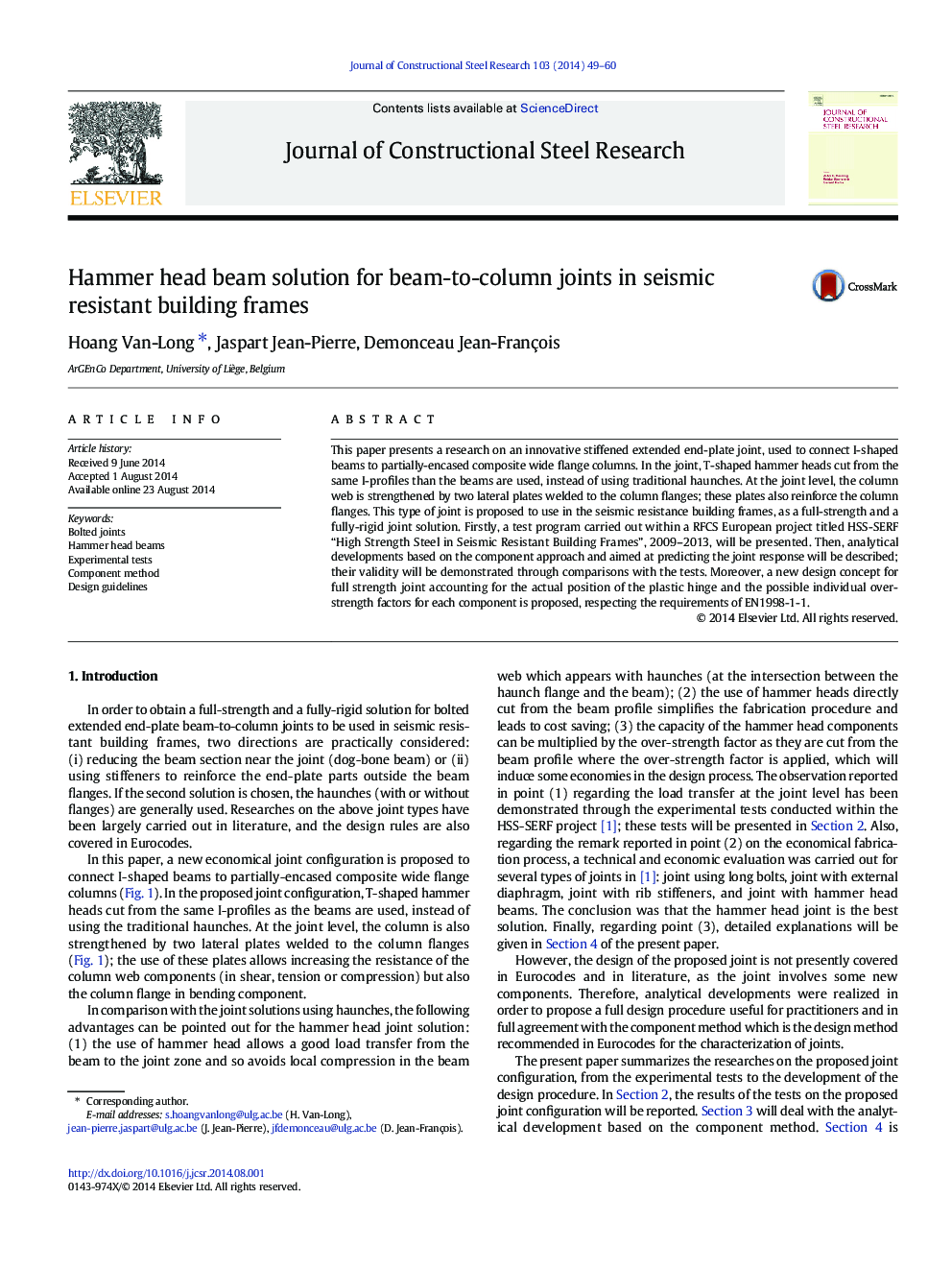| Article ID | Journal | Published Year | Pages | File Type |
|---|---|---|---|---|
| 284526 | Journal of Constructional Steel Research | 2014 | 12 Pages |
•In the joint, hammer heads are used instead of the traditional haunches.•The joint is proposed to be used in seismic areas as a full strength and rigid solution.•A test campaign was realized, and different failure modes are obtained.•A design procedure founded on the component method has been developed.•Actual position of plastic hinges and individual over-strength factors are considered.
This paper presents a research on an innovative stiffened extended end-plate joint, used to connect I-shaped beams to partially-encased composite wide flange columns. In the joint, T-shaped hammer heads cut from the same I-profiles than the beams are used, instead of using traditional haunches. At the joint level, the column web is strengthened by two lateral plates welded to the column flanges; these plates also reinforce the column flanges. This type of joint is proposed to use in the seismic resistance building frames, as a full-strength and a fully-rigid joint solution. Firstly, a test program carried out within a RFCS European project titled HSS-SERF “High Strength Steel in Seismic Resistant Building Frames”, 2009–2013, will be presented. Then, analytical developments based on the component approach and aimed at predicting the joint response will be described; their validity will be demonstrated through comparisons with the tests. Moreover, a new design concept for full strength joint accounting for the actual position of the plastic hinge and the possible individual over-strength factors for each component is proposed, respecting the requirements of EN1998-1-1.
